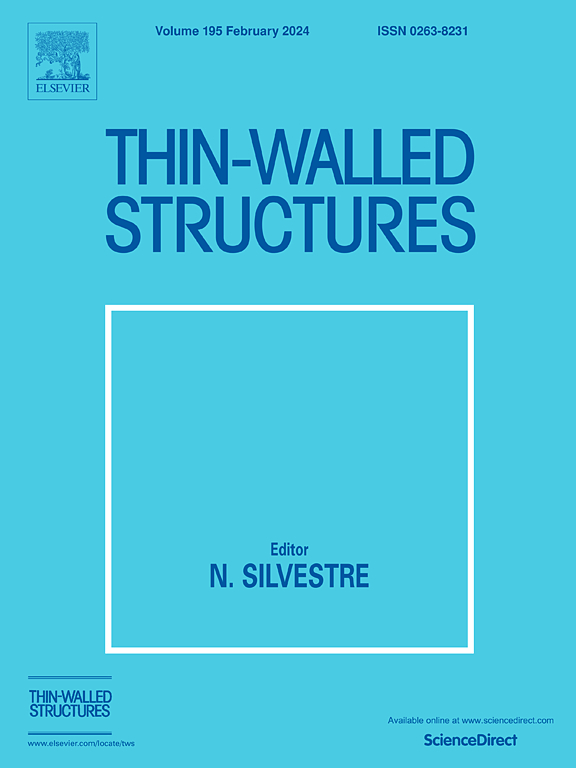A compact vibration isolator based on a structural-functional integrated lattice
IF 5.7
1区 工程技术
Q1 ENGINEERING, CIVIL
引用次数: 0
Abstract
In the aerospace field, vibrations pose significant challenges to the operational accuracy and safety of onboard equipment. In this paper, a compact vibration isolator based on a structural-functional integrated lattice is proposed. A parametric model for the isolator is developed to tune the first-order natural frequency of the vibration system. Firstly, an optimization objective of maximizing compliance (minimizing stiffness) is introduced based on the linear system’s response characteristics. Zigzag structures are designed using topology optimization, and a calculation method for the structural stiffness is proposed to reduce iteration cycles. Secondly, half of the body-centered cubic (H-BCC) lattice is employed to reduce the mass and stiffness of the zigzag structures. The stiffness of the H-BCC isolator is equivalently calculated, and the calculation method is validated through quasi-static experiments. Thirdly, a piecewise linear model is developed to analyze the stiffness nonlinearity caused by structural densification. The stability and bifurcation of the harmonic response are studied using the Floquet multipliers and the system response is calculated numerically. The nonlinear system’s superharmonic resonance is manifested through the short-time Fourier transform. Finally, vibration experiments are conducted to evaluate the performance. The harmonic response demonstrates that the designed isolator effectively tunes the system’s natural frequency, thereby broadening the vibration attenuation bandwidth. The response discontinuity caused by stiffness nonlinearity is validated through both calculations and experiments. Under random vibration excitation, the proposed isolator exhibits a vibration isolation efficiency exceeding 90%, confirming the effectiveness under both linear and nonlinear conditions.

求助全文
约1分钟内获得全文
求助全文
来源期刊

Thin-Walled Structures
工程技术-工程:土木
CiteScore
9.60
自引率
20.30%
发文量
801
审稿时长
66 days
期刊介绍:
Thin-walled structures comprises an important and growing proportion of engineering construction with areas of application becoming increasingly diverse, ranging from aircraft, bridges, ships and oil rigs to storage vessels, industrial buildings and warehouses.
Many factors, including cost and weight economy, new materials and processes and the growth of powerful methods of analysis have contributed to this growth, and led to the need for a journal which concentrates specifically on structures in which problems arise due to the thinness of the walls. This field includes cold– formed sections, plate and shell structures, reinforced plastics structures and aluminium structures, and is of importance in many branches of engineering.
The primary criterion for consideration of papers in Thin–Walled Structures is that they must be concerned with thin–walled structures or the basic problems inherent in thin–walled structures. Provided this criterion is satisfied no restriction is placed on the type of construction, material or field of application. Papers on theory, experiment, design, etc., are published and it is expected that many papers will contain aspects of all three.
 求助内容:
求助内容: 应助结果提醒方式:
应助结果提醒方式:


